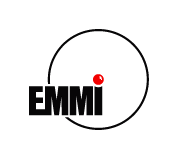Scientific case
The workshop focuses on the development of novel diagnostic methods and tools for investigations of High Energy Density Matter (HEDM).At the Facility for Antiproton and Ion Research (FAIR), the HEDM-states will be created by intense heavy ion beams, which are capable to heat large-volume targets of any elements uniformly and quasi-isochorically [1]. After this, an isentropic expansion in 1D planar geometry will give an opportunity for investigations of the Equation-of-state in unexplored regions of phase transitions, transport and radiation properties of HEDM.
In other experiments relevant to planetary science, multi-shock compression of e.g. cryogenic Hydrogen, inserted in a thick high Z tamper, heated by a rotating Uranium beam, will be investigated. In order to observe different phases of shock dynamics using imaging techniques, pulsed high energy radiation, particle sources and appropriate diagnostic methods are required. In this context imaging applications of laser generated beams of protons, electrons, neutrons and gamma-rays will be discussed.
A macroscopic size (mm³) of the heavy ion heated samples of high-Z elements defines the requirements on the laser produced sources of photons and particles used for diagnostics:
- Gamma radiation sources of photon energies above 1-2 MeV;
- Electron beams with energies above 20 MeV;
- Proton beams with energies above 50 - 100 MeV;
- Highly brilliant pulsed neutron beam sources.
Novel techniques used for improvements of the laser contrast, increase of the laser intensity far above the relativistic limit of 1018 W/cm², shortening of the laser pulse lead to generation of quasi mono-energetic, directed and coherent beams of particles and photons. All these improve the quality of imaging techniques dramatically. During the workshop novel methods of proton and electron acceleration as well as gamma-ray and neutron generation by the interaction of relativistic laser pulses with matter as well as their application as HEDM diagnostic tools will be discussed
Unique opportunities will also be given by the high-energy storage ring HESR where high quality beams of highly charged ions will be available at velocities up to γ = 6. Ideas for X-ray sources and high-field interaction scenarios in this storage ring are also welcomed.
Key Topics
- Proton generation by interaction of relativistic laser pulses with matter
- Electron acceleration in relativistic laser-plasmas
- A bright neutron source driven by short pulse lasers and applications
- Advanced x-ray and γ-ray sources and applications
- Nuclear physics in laser-matter interactions
- High energy flux x-ray and γ-ray detectors and optics
Opportunities for young scientists
During the workshop a poster session is planned for Postdocs, PhD and Master-Students, all together 20-25 contributions.
Workshop organization
The workshop will be held from September 30 - October 2 at the GSI Helmholtzzentrum für Schwerionenforschung in Darmstadt.The workshop program includes up to 30-35 oral presentation of (20+5) min. duration and a poster session.
Deadline for registration and contributions
The deadline for registration and workshop contributions (title + abstract) is August 25, 2013.
Financial support
Limited funds (up to 300€/person) for travel costs and accommodation in the GSI-hotel 'Steinhaus' are available to support participation of young scientists.For details on how to apply for it please see Financial Support

